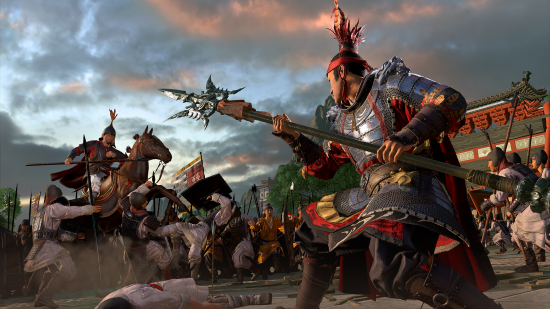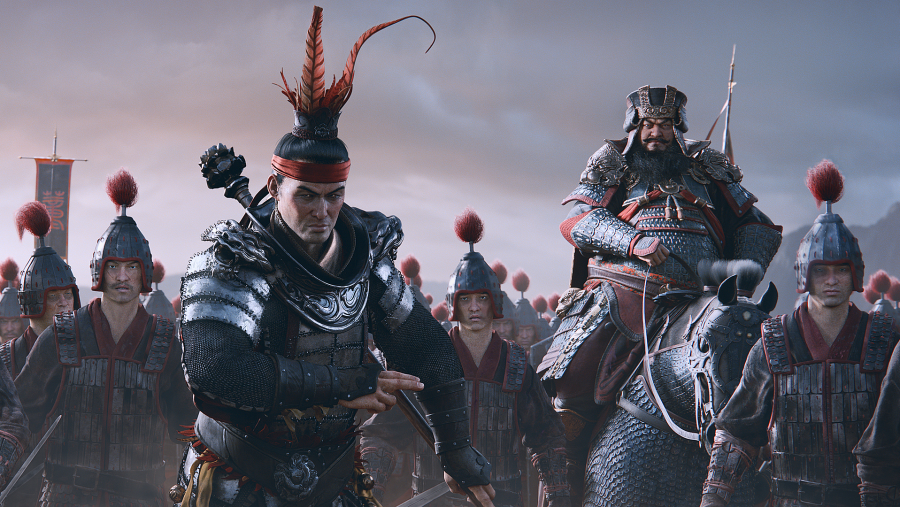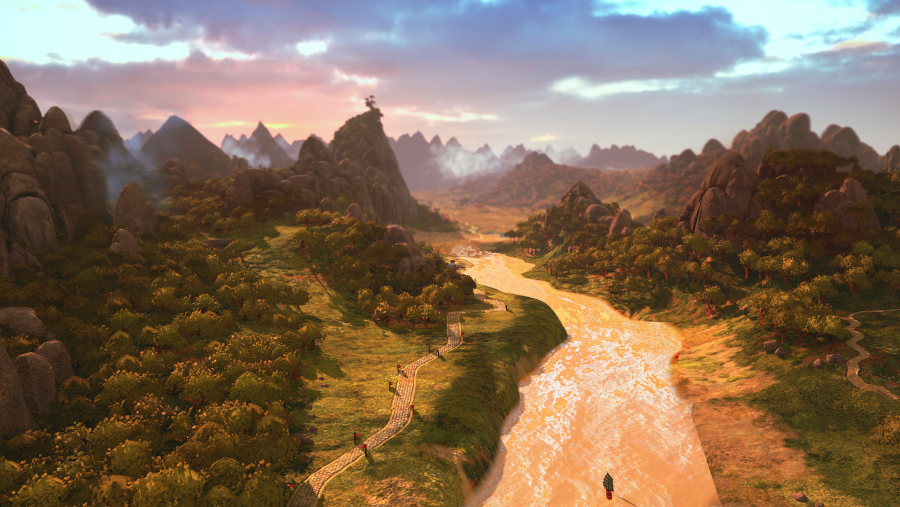Characters run through Total War: Three Kingdoms at every level. You’ve probably already heard that – it’s run through developer Creative Assembly’s marketing at every level – but we’re only just learning what it means.
On the eve of Gamescom, where CA will show off an ambush battle set during a beautiful Chinese night, we spoke with senior designer Leif Walter and game director Janos Gaspar about the new demo and the recently released Sun Jian trailer, which shows off the stunning new campaign map.
Read on to learn more about the impact characters will have on battle, how their skills and weaponry can evolve during a game, and what will change if you switch to the more historically accurate Classic Mode. For yet more news, you can learn about character roles in the new espionage system, and even how they’ll shape your faction’s abilities at the highest level.
PCGamesN: How do the in-game characters reflect their personalities in the Romance of The Three Kingdoms novel?
Leif Walter: All the characters fit into these roles – you have your Vanguard characters, your Commanders. The abilities of these characters are tailored toward their class, but the main set of protagonists all have unique abilities. Lü Bu is known for breaking through lots of men, so he has bespoke abilities, and the same with other characters.
Janos Gaspar: Whenever you read about generals in the novel, there are always clear roles, and the classes are designed around those. Obviously Cao Cao is a cunning commander, while Sun Jian gets the role of leading the vanguard, and there’s a lot of talk in the novel about the rearguard and defending or retreating armies. So all these classes are based on that.
Walter: We talk a lot about Three Kingdoms being a character-centric game, but it’s really about getting the personalities of these great heroes across. That happens with their traits and relationships, but also their abilities in battle, and what their signature is on the battlefield.
Also the units they bring to battle that they’re able to recruit – that’s heavily driven by their class. So a Commander will generally deploy the backbone of the army, whereas the Vanguard class will focus on shock cavalry, breaking through the enemy lines.
How will character abilities develop over the course of the game?
Gaspar: We have a character development system that’s linked to the destiny of different characters. This is preset from the beginning, and as they go through the game, they’re discovering who they really are. We also have a system where you can equip them with different weapons and armour. They’ll be visible on the battlefield, and there are different skills that you can choose for them, and customise your experience based on that.
Walter: There are some interesting examples. The Strategist is generally the guy who unlocks formations in battle – like the circle formation – for your units. So if you don’t bring a Strategist you normally don’t have access to these. But then there are certain items you can find, like maybe an ancient book of strategy…
Gaspar: … or a [character] follower, an adviser. He might bring one of the formations.
How do we acquire weapons and armour?
Walter: One big source is capturing them from enemy characters. So if you fight, let’s say Lü Bu, in battle, and you slay him, then you have the chance to loot his famous halberd.
Gaspar: But over the course of the game there are other ways that we’re not yet talking about.
What exactly changes about characters in Classic mode?
Gaspar: Their abilities are not present – that’s a big change. You can see in the Gamescom demo how certain abilities are game changers. Another point is survivability – they’re not such big fighters. You can’t just take on a lot of units by yourself. Also, the character itself is not a single unit, but is like a general with its bodyguards, like in previous Total Wars. So it’s very unlikely you would use most of the generals for the roles you would in the Romance version; you won’t hold back masses of units, they’re not the best for breaking lines. It pushes everything on the battle side toward tactical decision-making instead of personal bravado.
Walter: In Romance mode you’d have single characters deciding the outcome of a battle – turning the tide, if you use them wisely. In Classic mode, it’s much more about how you build your line, where you flank, more like the grander scale. And you have fatigue, so you might have to patch out some fatigued units on your left flank with support units. It’s way more tactical gameplay.
Gaspar: Classic mode is like how you play any historical Total War, and generals in historical Total Wars are important. Putting them in the right place, or bringing some more melee-oriented generals into combat can turn the tide of the battle, but it’s not really about that. You could say for Romance we dialed up characters to 11 or 12 to match their level in the novel.
Walter: But even in Classic mode, character relationships at still at the centre of gameplay in battle and in the campaign. They are still important historically – many of our big characters really had relationships with each other, the novel just romanticised them a bit more. So all of that still plays a part: they have their traits, they build their friendships, they betray you, they help you betray your allies. All these stories are still part of the Classic mode because it’s part of the Three Kingdoms experience.

Gaspar: In both modes, though, everyone is mortal, because mortality is a core element of the book. In Romance of The Three Kingdoms, by the time you’ve got to the 220s most of the original characters are dead. So mortality is part of the game, but in Classic mode it’s way more likely that you’ll lose characters.
Walter: Yeah, characters can die of old age, and that’ll happen in both modes. So even in Romance mode you’ll have the sons of your leaders taking over at some point.
Gaspar: Or they’ll lose a duel to the death.
Any other differences between the two modes outside of the characters?
Walter: On the events side, we want to get the narrative of the novel, and the character interactions, into the game. We have some events that are only part of Romance mode that really help immerse the player into this sandbox of the Romance of The Three Kingdoms. In Classic mode we have more historical events, and no Romance events take part of that. So it helps steer the narrative for players, depending on the mode.
The campaign map, as seen in the trailer, is clearly building on the direction established by Total War: Warhammer. What technical differences or developments would you highlight?
Walter: Three Kingdoms is the next big project that really helped to develop the engine further. It’s a modular system where we bring in new modules that expand the capabilities of the engine, and yeah, it looks very good on campaign. We really want to get this artistic style across where it’s a really fresh and modern look, like the modern painters who paint historical landscapes.
Gaspar: The verticality [of the terrain] is even more important for us than for Warhammer, as this landscape painting is one of the core inspirations. We’re pushing that to the maximum, and if you look at the battlefield itself, everything feels way closer and way bigger than ever before. You feel that you have these giant mountains towering over you.
Walter: And the Chinese landscape obviously helps a lot there. You have the sizzling deserts in the northwest, and then in the south these cool mountains, and the tropical areas. There’s really a lot of diversity there that we’ve drawn from.

Obviously most of the theatre is inland. Is there any ocean? Any naval battles?
Gaspar: We’re not talking about naval battles now, but the majority of the game is about land conflict. Percentage-wise, this is the largest landmass in Total War so far, I think.
Walter: Yeah, it’s the whole landmass of China, nothing’s cut off or anything. It’s the same size as Attila, I think?
Gaspar: Yeah, not in shape, but in overall distances.


